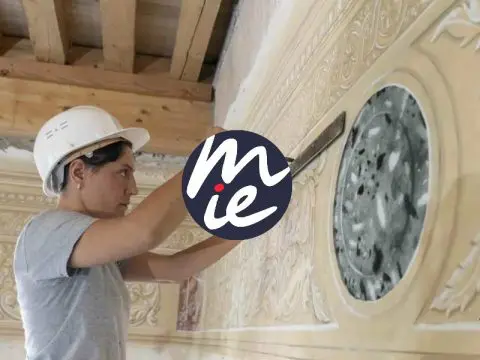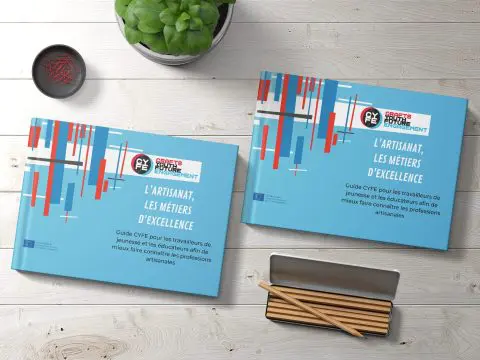-
Botteganove -
Botteganove -
Botteganove -
Botteganove -
Botteganove
Interview of Christian Pegoraro, founder of Botteganove.
A FONDAZIONE COLOGNI INTERVIEW
We have met Christian Pegoraro, a third-generation master ceramist, who has been able to re-interpret the ancient tradition of ceramics processing through innovative thinking.
- What is the story of BottegaNove? How did you start your activity?
BottegaNove was created at the end of 2013, with the aim to produce decorated mosaic pieces in ceramics and porcelain, following the working process used in artistic ceramics. I grew up amidst ceramics in Nove, where my grandfather established his own artistic manufacture firm in 1964. The activity was then continued by my father and is now carried forward by myself and another associate partner.
Over the years, we have cooperated with important firms in the coating sector, providing specific decorations based on high-end craftsmanship and excellent manual skills. Thanks to this field experience and to Nove’s traditional savoir-faire, I decided to embark on an individual pathway in mosaic production, with an immediately innovative approach, cooperating with people who did not come from the world of production, but were able to work on ideas and creativity in transversal fields, like architect Cristina Celestino.
-
What kind of products do you create?
We mostly create decorated mosaic pieces for ceramics and porcelain coating. We are also active in the field of artistic ceramics, especially for so-called traditional productions, but we are now working toward achieving unprecedented, research-based results by blending two-dimensional coating production and artistic ceramic production.
We consider ourselves as a “happy island” within the mosaic and tile landscape: we are among the very few who are still carrying forward a tradition of handmade tile production and decoration within the standardised, anonymous scenery of the coating sector.
The Plumage collection typifies the cooperation between our savoir-faire and Cristina Celestino’s creative vision and research. For this project we have produced ad-hoc moulds giving shape to three-dimensional tesserae, with bas-relief veining. The project has been realised both in porcelain (with a 100% Limoges mixture) and in ceramics. Porcelain is paste-dyed, while ceramics tesserae may be either monochromatic (with or without colour-changing lustres) or hand-decorated. Our point of reference rests on birds’ plumage: variety springs both from the plumage colours or from the multifarious combinations we can achieve.
Thus, the strong points of our work are enhanced by this project, allowing us to explore, within one single theme, an endless variety of decorations – even customised ones – and to achieve the most varied results by assembling different kinds of tesserae (as we did in the panels on display in the Fuorisalone). The chromatic and material vibrations from the tesserae turn this versatile, rich project into an actual interior design project.
-
In what way is “slow time” a value for you?
The leading factor in our entrepreneurial approach is a strong wish to create something beautiful that emphasises manual work. Each production process is hinged on a human being: even where technological advance is growing, the individual person is paramount to obtain a state-of-the art object. Even imperfections become unique, the unrepeatable gesture of a hand. We are working towards updating and reintroducing traditional processes within contemporary projects. We think that, in this pursuit, we need to have a different approach from what we generally are forced to comply with, we need “slow time”, “making” time.
-
Are all the steps in your production based on artisan techniques?
We use artisan techniques “imported” from the world of artistic ceramics. Some have been improved to make them more apt for ceramics coating, others are the same as have always been used in Nove’s ceramics. For example, the individual tesserae in the Plumage collection are cast individually, one by one, there is no other way to produce them. In the same way, decorations are mostly handmade, one item at a time, by using glaze compositions, which are created in our own firm.
-
Who are your clients?
Most of our clients come from architecture or interior design studios, looking for exclusive, often customised products for specific projects.
We especially address clients who are interested in products widely differing from industrially standardised, serial items. The cost is different, of course, as is our production, relying on high-end craftsmanship.
We think time is “the” luxury item nowadays and the “slow time, making time” concept conveyed by our products might open up new potentialities for use in home areas, like living rooms, thanks to their decorative nature and valuable finishes.
-
Do you think young people may be interested in undertaking this activity?
It is an extremely stimulating activity, there is no “serial” work in our production. It requires constant motivation and concentration, as the variables affecting the production of a state-of-the-art product are many and they are constantly changing. Trying to mould clay to your liking, foreseeing the effect of glazing after a 1000°C firing, waiting until the next day, when you open the furnace for a particularly difficult firing, these are our daily, inspiring challenges.
-
Will you attend the Milan Design Week 2016? What is your programme?
Yes, we will attend the Ladies & Gentlemen event, (organised by PS& Secondome), a collective team pooling a selection of the most interesting designers and publishers within the contemporary landscape. You can find us at 14, via Cesare Correnti, 5vie District.
*********
All rights about this interview belong to Fondazione Cologni.









